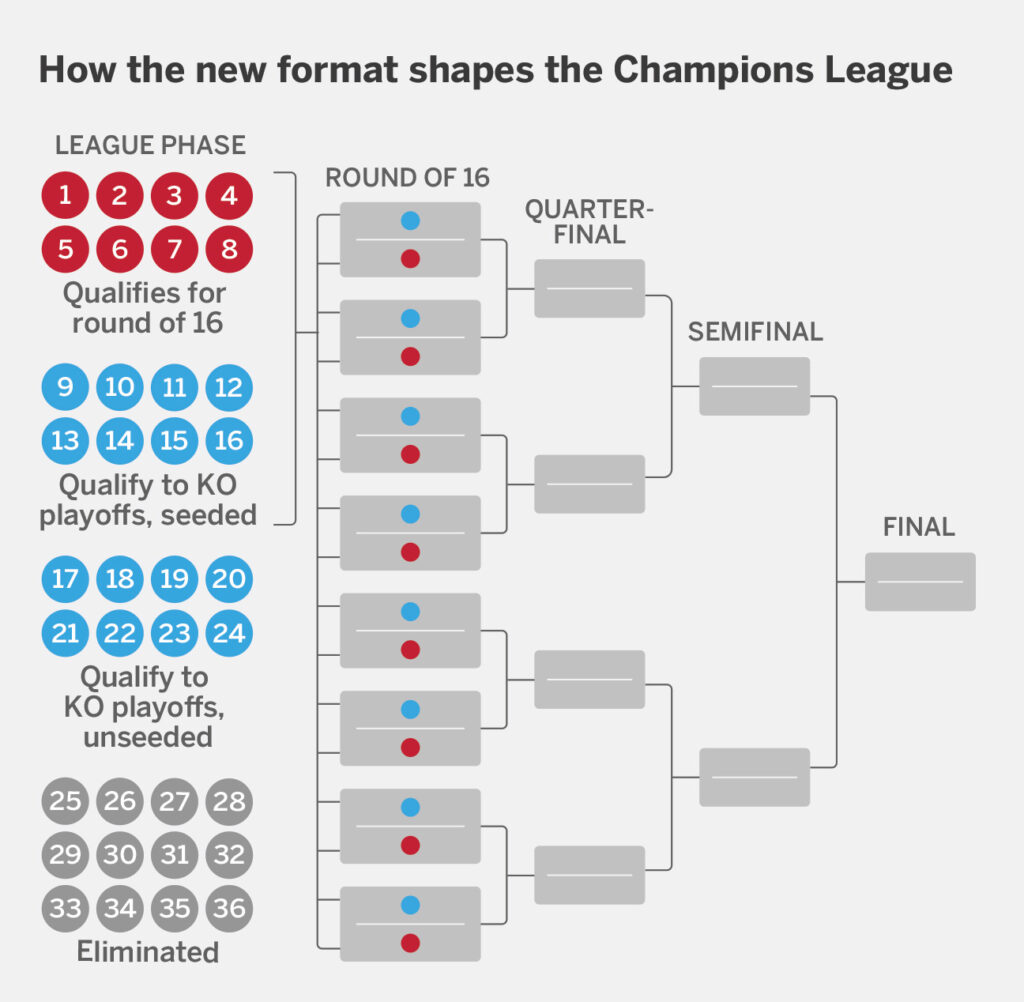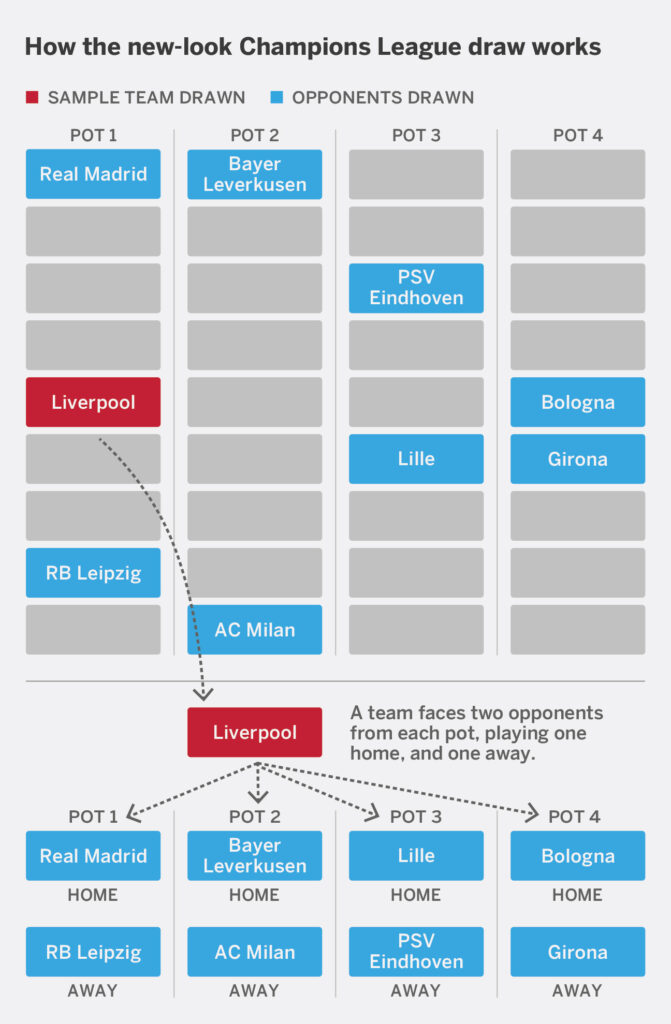![After UCL draw, here's everything you need to know the new format [DETAILED] After UCL draw, here's everything you need to know the new format [DETAILED]](https://www.sportvectru.com/wp-content/uploads/2024/08/images.jpeg)
The UEFA Champions League is back with a fresh look, introducing a format that fans have never seen before.
This season brings a mix of straightforward changes, complex tweaks, and some aspects that might only become clear when we reach the knockout stages in February.
What’s New in the Champions League Format?
For the first time in over two decades, the format of Europe’s premier club competition has undergone significant changes.
Previously, the tournament featured 32 teams split into eight groups of four. The top two teams from each group would advance to the Round of 16, while the third-placed teams dropped into the UEFA Cup/Europa League, and the fourth-placed teams were eliminated.
This year, however, the competition has expanded to 36 teams, and instead of the traditional group stage, we now have a “league phase.”

How Does the New Format Work?
Here’s a breakdown of the new structure:
- Teams finishing 25th to 36th: Eliminated from the competition by January.
- Teams finishing 9th to 24th: Enter a knockout phase playoff in February to secure a spot in the Round of 16.
- Top 8 teams: Automatically advance to the Round of 16, which kicks off in March.
- Notably, the safety net of dropping into the Europa League is gone. Once a team is out of the Champions League, their European journey ends for the season.
From the playoff round onward, the competition follows the familiar two-legged format through to the semifinals, concluding with a one-legged final. However, the draw process has been streamlined—details on that are covered below.
The Champions League Draw: What’s Different?
While the draw’s appearance might not seem drastically different, with four pots of teams (each now containing nine clubs instead of eight), there are some significant adjustments due to the expanded field.
Changes in Seeding
Previously, Pot 1 included the Champions League and Europa League titleholders, alongside the champions of the top six domestic leagues. Pots 2 through 4 were filled based on UEFA’s club coefficient, reflecting performance over the past five seasons.
Now, Pot 1 is reserved solely for the Champions League titleholders, with all other positions determined by the UEFA club coefficient.
Despite these changes, the importance of the pots has diminished somewhat. In this new format, teams are drawn to play two clubs from their own pot. Under the old system, being in Pot 1 often meant avoiding other top teams during the group stage.
How Was the Draw Conducted?
Instead of assigning teams to groups, the new draw format directly creates the fixture list. Each team will play eight games, drawing two opponents from each of the four pots. One match from each pot will be played at home, and the other away.
With 36 teams and 36 unique fixture lists, the draw process was a bit more intricate this season. Two main rules applied:
- No club could face another team from their own league (e.g., Arsenal couldn’t be drawn against Aston Villa).
- No club could play more than two teams from the same country (e.g., if Arsenal drew Bayern Munich and Borussia Dortmund, they couldn’t also play VfB Stuttgart).
The draw ceremony itself was a significant departure from tradition. In the past, the draw was conducted manually, with former Champions League players selecting balls from pots. This year, however, the complexity of the new format meant the process would have taken over three hours and required 1,296 balls if done manually.
Here’s how the draw unfolded:
- A former player drew a team from each pot (starting with Pot 1 and ending with Pot 4).
- A computer then randomly selected that team’s eight opponents, adhering to the draw’s constraints. The computer also determined whether each match would be played home or away, with Cristiano Ronaldo pressing the button to finalize the selections.
While the significance of the pots has reduced, they still matter due to the varying quality of the teams within them. The distribution of home and away games is also crucial, given the diverse range of potential opponents.
Note: The draw set the fixture lists, but the order in which the games will be played won’t be released until Saturday.

This season promises a unique and exciting Champions League experience, with its new format adding a fresh twist to Europe’s most prestigious club competition.
Leave a Reply